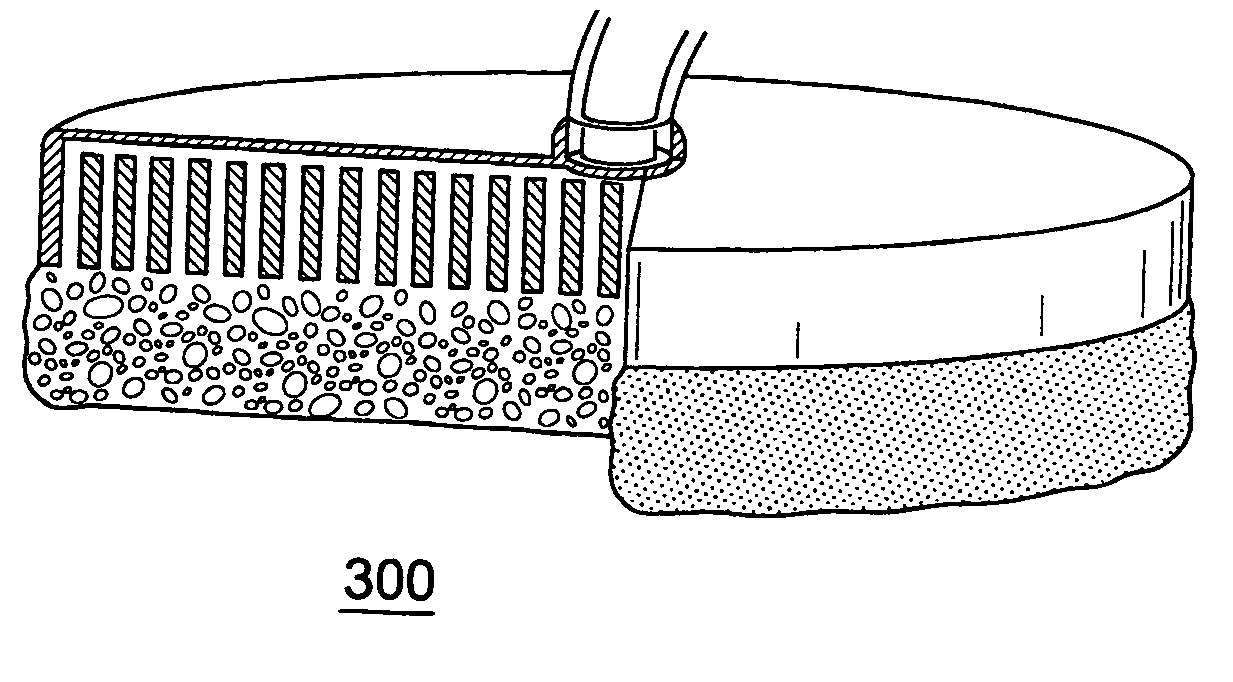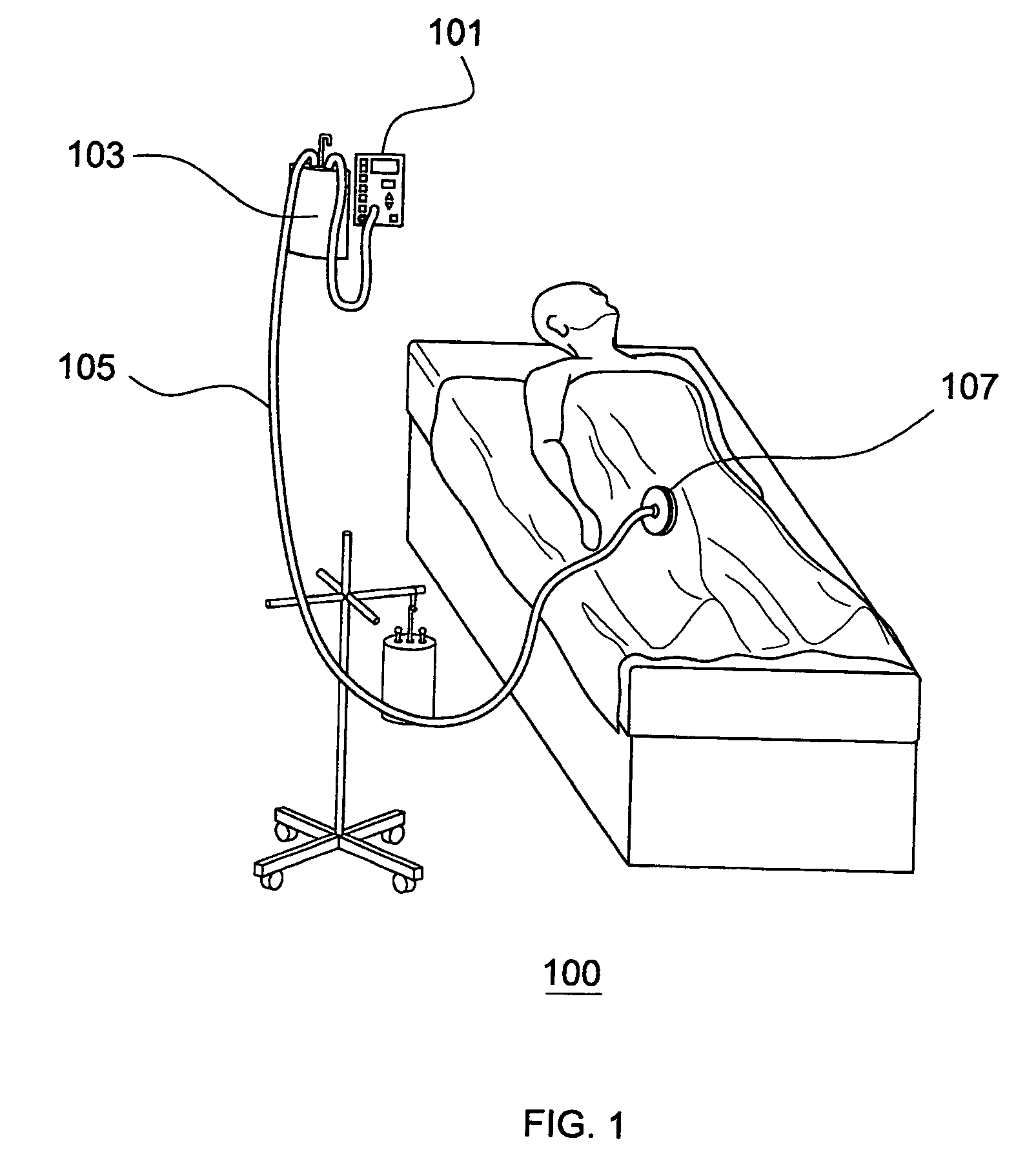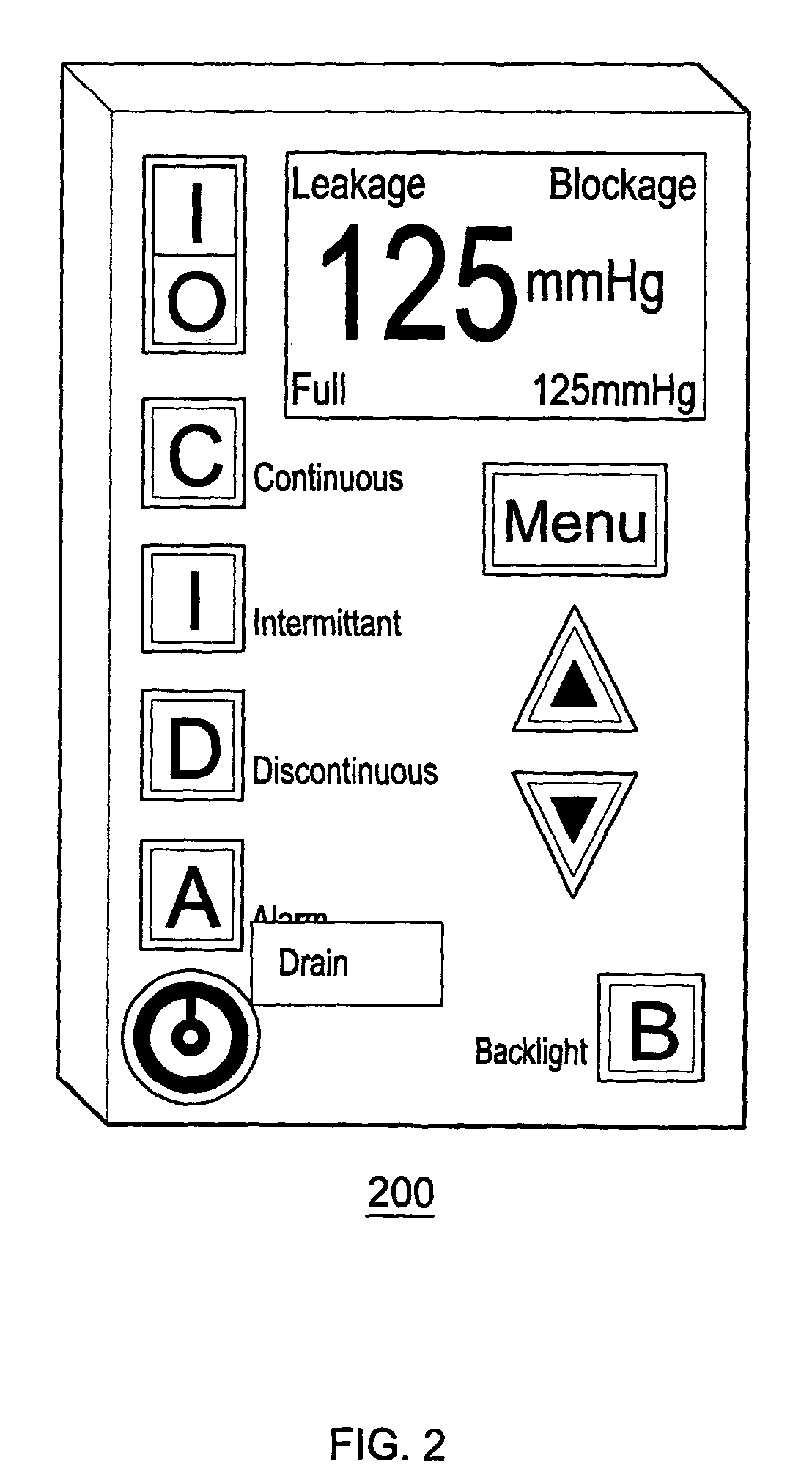Sub-atmospheric wound-care system
a sub-atmospheric and wound-care technology, applied in the field of patient wound care, can solve the problems of inability to recognize the deficiencies of conventional devices, the commonity of wounds of this type in combat, and the subject of kci and blue sky medical products,
- Summary
- Abstract
- Description
- Claims
- Application Information
AI Technical Summary
Problems solved by technology
Method used
Image
Examples
exemplary embodiment 100
[0015]FIG. 1 depicts an exemplary embodiment 100 of the Sub-Atmospheric Wound-care System (SAWS) in a typical clinical setting. Various embodiments of the present invention adopt novel and useful approaches, as compared to conventional devices, for each of three components of the SAWS negative pressure wound care system.
[0016]Various embodiments of SAWS are configured with a flow rate meter 101 to measure the flow rate of liquid removed from the wound. This helps to avoid the danger of unwitnessed exsanguination, a rare but potentially lethal threat with conventional devices which have no early means for detecting accelerated fluid outflow from the wound. For example, in situations where an injured artery starts to bleed under the wound dressing, conventional devices have no similar dedicated warning system. Without a flow meter 101 and high flow alarm, conventional devices have no means for alerting medical staff to a potential vascular leak or exsanguination event. Problems such a...
exemplary embodiment 200
[0027]FIG. 2 depicts an exemplary embodiment 200 of the electronic-programmable vacuum regulator (EVR) for the SAWS. The electronic-programmable vacuum regulator (EVR) is the human interface with the SAWS device, and as such, is connected or otherwise has access to the vacuum path between the wound interface chamber and the regulated vacuum source. Various embodiments of the EVR contain an automated pressure valve that is controlled by internal software. This valve may be opened and closed in response to two pressure sensors that continuously monitor the negative pressure (vacuum) being applied to the wound. The intake end of the valve is typically configured to accept flow from either the hospital wall vacuum source or from an on-board brushless vacuum motor. Typically, the primary vacuum source for this device is the wall vacuum source. The on-board motor is there as a back-up should the primary source fail. Additionally, it will serve as the primary source when patients need mobi...
PUM
 Login to View More
Login to View More Abstract
Description
Claims
Application Information
 Login to View More
Login to View More - R&D
- Intellectual Property
- Life Sciences
- Materials
- Tech Scout
- Unparalleled Data Quality
- Higher Quality Content
- 60% Fewer Hallucinations
Browse by: Latest US Patents, China's latest patents, Technical Efficacy Thesaurus, Application Domain, Technology Topic, Popular Technical Reports.
© 2025 PatSnap. All rights reserved.Legal|Privacy policy|Modern Slavery Act Transparency Statement|Sitemap|About US| Contact US: help@patsnap.com



